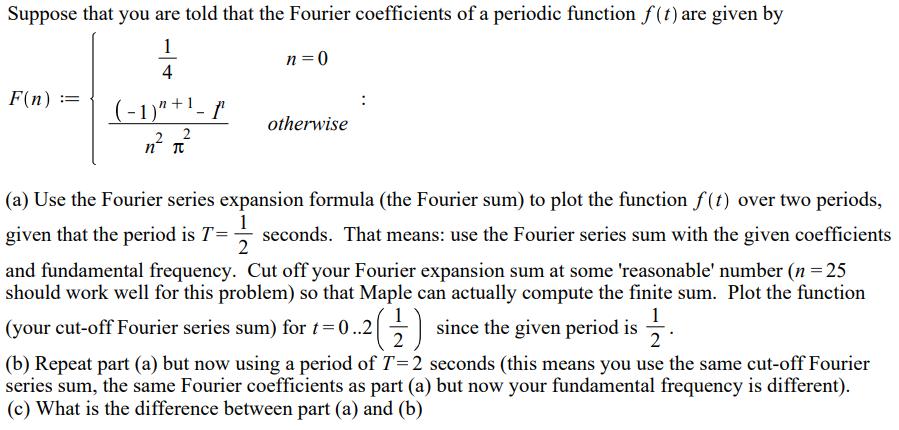Answered step by step
Verified Expert Solution
Question
1 Approved Answer
Suppose that you are told that the Fourier coefficients of a periodic function f(t) are given by F(n) == 1 4 (-1)+1-1 2 2

Suppose that you are told that the Fourier coefficients of a periodic function f(t) are given by F(n) == 1 4 (-1)"+1-1 2 2 n =0 otherwise (a) Use the Fourier series expansion formula (the Fourier sum) to plot the function f(t) over two periods, given that the period is T= 1 seconds. That means: use the Fourier series sum with the given coefficients and fundamental frequency. Cut off your Fourier expansion sum at some 'reasonable' number (n = 25 should work well for this problem) so that Maple can actually compute the finite sum. Plot the function (your cut-off Fourier series sum) for t=0..2 (2) since the given period is 1/2. (b) Repeat part (a) but now using a period of T=2 seconds (this means you use the same cut-off Fourier series sum, the same Fourier coefficients as part (a) but now your fundamental frequency is different). (c) What is the difference between part (a) and (b)
Step by Step Solution
There are 3 Steps involved in it
Step: 1

Get Instant Access to Expert-Tailored Solutions
See step-by-step solutions with expert insights and AI powered tools for academic success
Step: 2

Step: 3

Ace Your Homework with AI
Get the answers you need in no time with our AI-driven, step-by-step assistance
Get Started


